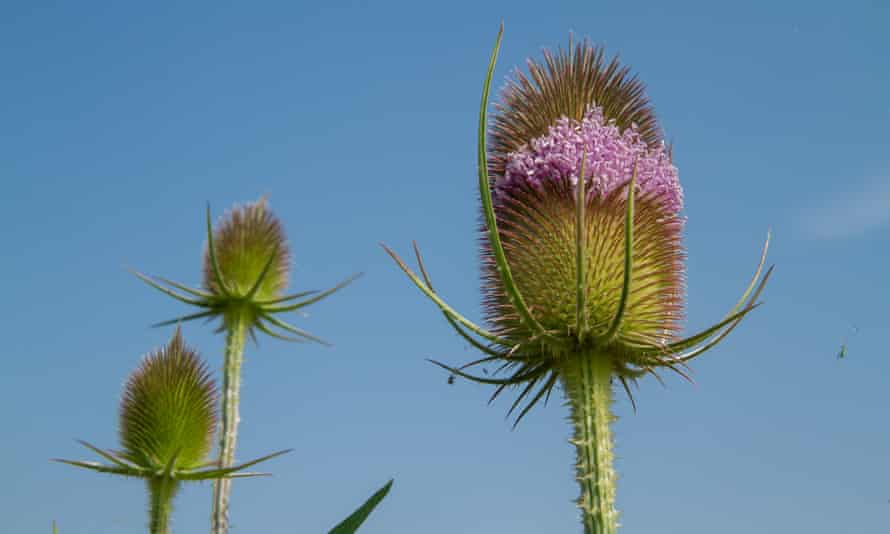Country diary: danger lurks everywhere on the time-hardened teasel
Sandy, Bedfordshire: There is a beautiful savagery to this plant that begins life as a softie

Summer has grown tall around the farm reservoir, and among the living spires and steeples are plants that stand head and curly shoulders above the rest. The hard-stemmed teasels that look down on me now showed a softer character on their way up. Five or six weeks ago, I stroked their furry tops, yielding and pliable like pussy willow catkins. I dabbed at the raised bumps on floppy fresh leaves, and fingered the puppy-dog teeth on lime green stalks that still had enough give to avoid me saying ouch.
The flower heads have stiffened with maturity, feeling like the bristles of a nylon paintbrush. And some have begun the slow burn of blooming, blazing one coil at a time like a firework sparkler, creating pale purple rings of florets.
Around the base of each head, spiny bracts curve up, longbow-like, short spikes alternating with long as if they marked some kind of gauge or clock. On some teasels, enterprising spiders have got their measure, slinging threads between the bracts that are now beaded with the legs, wings and husks of tiny flies.
I dare to touch the prickly points on one stem, and one only, for the spikes are beginning to harden into savage armour. Just below are the features that give the teasel its other name of Venus’s basin. Pairs of facing leaves grow up from the stalk and the lower parts are wrapped completely around to form a seal, containing a goblet-like bowl or basin that the Victorian author-naturalist Richard Jefferies observed to be “a natural rain-gauge”.
There are four tiers on this plant, and Jefferies – an acute and fastidious observer – quantifies their capacity by writing: “If it is a large plant, the cup nearest the ground – the biggest – will hold as much as two or three wine glasses.” The upper leaves are a slippery slope for less sure-footed insects. In one pool of soupy water, a fly floats with wings outstretched. In another, the dark dregs include a crumpled cranefly. This prickly plant, with all its individual character, does take prisoners.